Types of monkey with pictures and facts – a look at the different monkey groups and well-known monkey species. Discover the biggest, smallest, most common and most endangered species of monkey…
Page Index
- How Many Types Of Monkey Are There?
- What Is A Monkey?
- The Two Main Types Of Monkey: Old World Monkeys And New World Monkeys
- Why Are There Two Main Monkey Groups?
- Types Of Old World Monkey With Pictures & Facts
- Types Of New World Monkey With Pictures & Facts
- Further Reading
Additional Monkey Information On Active Wild
- For in-depth monkey information, see this page: Monkeys: The Ultimate Guide
- Confused about terms such as 'species', 'family' and 'order'? Check out this page: Animal Classification
Types Of Monkey
There are around 267 species of monkey living today. They are divided into two main types of monkey: old world monkeys and new world monkeys.
All of the old world monkeys belong to a single family, whereas the new world monkeys are divided between five families.
On this page you’ll find information on the two main types of monkey (old world monkeys and new world monkeys) plus pictures and facts on some notable species in both groups.
What Is A Monkey?
Monkeys are mammals in the order Primates. Not all primates are monkeys; the order Primates also includes animals such as apes, tarsiers and lemurs.
Apes (e.g. animals such as chimpanzees, gorillas and gibbons, etc.) are not monkeys.
Most monkeys are social, arboreal (tree-dwelling) animals. Even those that don’t live in trees (such as baboons) are descended from animals that once did.
Monkeys have a wide range of adaptations for an arboreal lifestyle. These include long, flexible limbs and dexterous hands and feet. Their eyes are forward-facing, giving them good depth perception. This helps them to judge their leaps as they make their way through the trees.
Monkeys are highly-intelligent. Research has shown that social primate species tend to have larger brains than those that are less social.
The Two Main Types Of Monkey: Meet The Old World Monkeys and the New World Monkeys.
As we’ve found, there are two main types of monkey: the old world monkeys and the new world monkeys. The new world monkeys branched off from the other simians* around 45 million years ago.
* Simians are members of a sub-group of Primates that includes both monkeys and apes.
Old World Monkeys
The old world monkeys are found on the continents of Asia, Africa and Europe (only one species of monkey, the Barbary macaque, is found in Europe).
Old world monkeys tend to be larger in size than their new world counterparts. They have shorter tails and their thumbs are opposable.
Old world monkeys, together with apes, form the group Catarrhini. The name Catarrhini means ‘down-nosed’, and refers to the downwards-pointing nostrils of these primates.
The old world monkeys and the apes branched off from one another around 25 million years ago. There is just one family of old world monkeys: Cercopithecidae.
Within the old world monkey family are several sub-groups, including:
- Baboons
- Macaques
- Talapoins
- Guenons
- Black and white colobuses
- Doucs
- Vervet monkey
- Gelada
- Mangabey
- Langur
- Mandrill
- Surilis
- Patas monkey
- Proboscis monkey
New World Monkeys
The new world monkeys are found mainly in Central and South America (in North America monkeys are found no further north than Mexico).
The scientific name of this group, Platyrrhini, means ‘flat-nosed’. This is because the nostrils of new world monkeys face to the sides.
New world monkeys tend to be smaller than old world monkeys. Their tails are longer, and prehensile (able to grip). A new world monkey’s tail can be used as a ‘fifth hand’, holding onto branches as the monkey is climbing.
There are five families of new world monkey: Callitrichidae, Cebidae, Aotidae, Pitheciidae and Atelidae.
There are several types of new world monkey, including:
- Marmosets
- Tamarins
- Capuchins
- Squirrel monkeys
- Night monkeys
- Titis
- Sakis
- Uakaris
- Howler monkeys
- Spider monkeys
- Woolly spider
- Woolly monkeys
Why Are There Two Main Types Of Monkey?
The first primates appeared at some point between 85 and 55 million years ago. All of today’s primates evolved from these early primates.
Over millions of years several branches appeared in the primate family tree. These would become the various primate groups (apes, tarsiers, monkeys, etc.) that we know today.
One such branch is Simiiformes, a group of primates whose members are known as simians. Today there are three main groups of simians: the old world monkeys, the new world monkeys, and the apes.
The new world monkeys branched off from other simians around 40 million years ago. They found themselves cut off from the other simians after having made their way to what is now South America. (The reached South America either via a land bridge or by being carried across the sea on a natural raft probably made of vegetation.)
It wouldn’t be for another 15 million years that the apes and the old world monkeys would branch off from one another.
Surprisingly, this means that an old world monkey is more closely related to an ape such as a gorilla, or a human, than it is to a new world monkey.
Types Of Monkey: Old World Species
Blue Monkey
- Scientific name: Cercopithecus mitis
- Conservation status: Least Concern
The blue monkey is a species of old world monkey present in several central and east African countries, from Sudan in the north to South Africa at the foot of the continent.
Despite its name, the blue monkey is mainly dark grey, with lighter, olive-grey patches on its face. The species inhabits several types of forest, including tropical rainforest and bamboo forest.
Chacma Baboon
- Scientific name: Papio ursinus
- Conservation status: Least Concern
The chacma baboon is one of five species of baboon. It is found in several southern African countries, including South Africa, Namibia and Botswana.
Like all baboons it has a long, dog-like snout and spends more time on the ground than most other types of monkey.
The chacma baboon is one of the heaviest and longest of all monkeys. A large male may have a combined body-tail length of 199 cm (28.3 in.) and weigh up to 45kg (99lb.)
Crab-Eating Macaque
- Scientific name: Macaca fascicularis
- Conservation status: Least Concern
The crab-eating macaque is one of 23 species of macaques. This particular species gets its name from its habit of foraging on beaches for crabs. Despite the name, crabs do not usually form a major part of the species’ diet, which also contains fruits, seeds and other plant matter. The monkey will also consume small vertebrates and invertebrates.
The species is also known as the 'long-tailed macaque' due to its long tail, which can be longer than its body.
The crab-eating macaque is found in the wild in several countries in Southeast Asia, including Indonesia, Thailand and Vietnam.
Gelada
- Scientific name: Theropithecus gelada
- Conservation status: Least Concern
With a global population of around 200,000 mature individuals, the gelada is thought to be the world’s commonest monkey. Despite this, its population is decreasing as a result of hunting and habitat loss.
Unlike most monkeys, the gelada is primarily terrestrial (ground-dwelling). It lives in grasslands and rocky areas of Ethiopia.
The species is closely related to the baboons.
Grey-Cheeked Mangabey
- Scientific name: Lophocebus albigena
- Conservation status: Least Concern
The grey-cheeked mangabey lives in the forests of several central African countries, including Equatorial Guinea, Cameroon, Central African Republic and The Democratic Republic of the Congo. This dark-colored, relatively small monkey lives mainly in the forest canopy, where it forages for the fruit that make up the majority of its diet.
The grey-cheeked mangabey is one of six species of crested mangabey.
Japanese Macaque
- Scientific name: Macaca fuscata
- Conservation status: Least Concern
The Japanese macaque is found only in Japan, where it mainly lives in forests. Some of the region in which it is found is covered with snow for several months of the year. For this reason the species has the alternative name ‘snow monkey’. This well-known old world monkey is known for its habit of bathing in hot springs.
The Japanese macaque lives further north than any other species of monkey. In addition, this hardy species inhabits regions colder than those inhabited by any other monkeys.
King Colobus
- Scientific name: Colobus polykomos
- Conservation status: Vulnerable
The king colobus is one of five species in the genus Colobus, whose members are together known as the black and white colobuses.
This rainforest monkey is found in several countries in West Africa, including Sierra Leone, Liberia, Côte d'Ivoire and Guinea. It lives in small groups who warn off rival troops by calling.
The king colobus is rated Vulnerable. The main threat to its survival is hunting. It is also threatened by habitat loss.
Mandrill
- Scientific name: Cercopithecidae
- Conservation status: Vulnerable
The mandrill is the world’s largest monkey species. It can weigh up to 54 kg (119 lb.), with a shoulder height while on all fours of 65 cm (26 in.).
Mandrills inhabit the rainforests of the West African countries Cameroon, Republic of the Congo, Equatorial Guinea and Gabon. They live in large groups, spending most of the time on the ground, but also entering the forest canopy to feed.
- You can find out more about this species on this page: Mandrill Facts
Proboscis Monkey
- Scientific name: Nasalis larvatus
- Conservation status: Endangered
The proboscis monkey is one of the best known types of monkey due to its slightly bizarre appearance. This long-nosed simian is only found in the forests of Borneo. It lives near rivers, swamps and coasts, possibly because the soil of these areas is rich in minerals and salts.
The main threat to this endangered monkey is deforestation. Much of the proboscis monkey’s natural habitat has been lost due to logging.
- You can find out more about this species on this page: Proboscis Monkey Facts
Rhesus Macaque
- Scientific name: Macaca mulatta
- Conservation status: Least Concern
This adaptable monkey is found in a wide range of habitats, including forests, shrublands, grasslands and human towns and cities. The rhesus macaque is found throughout much of southern Asia. It inhabits a wider area than that of any other non-human primate.
The rhesus macaque is a common sight in Asian cities, where it has learned to acquire food by begging, rooting through trash, or even stealing directly from humans.
Vervet Monkey
- Scientific name: Chlorocebus pygerythrus
- Conservation status: Least Concern
The vervet monkey is found in eastern Africa from Ethiopia to South Africa. It lives in savannas, forests and woodlands, and is often found near rivers.
Vervet monkeys live in troops which range in size from 10 to 38 members. Female vervet monkeys stay with their troops for their entire lives. Males are more likely to venture off and join neighboring groups.
Although the conservation status of the vervet monkey is Least Concern, the species is hunted for bushmeat, and is also regarded as a pest by local farmers.
Types Of Monkey: New World Species
Bald Uakari
- Scientific name: Cacajao calvus
- Conservation status: Vulnerable
The bald uakari is found in the seasonally flooded forests of Brazil and Peru. It has a shaggy brown coat and a hairless head. Its tail is short for a new world monkey.
The species’ preference for living near rivers means that it is vulnerable to human interference. It is threatened by deforestation for logging and small-scale agriculture. The species is also threatened by hunting, although its human-like looks make it less-likely to be hunted than other monkeys in some parts of its range.
Black Howler Monkey
- Scientific name: Alouatta caraya
- Conservation status: Least Concern
The black howler monkey is also known as the black and gold howler monkey because females and juveniles are golden-brown rather than black.
Troops of black howler monkeys use their loud calls to announce their presence to other troops. This lessens the likelihood of fighting between the groups. They are most likely to be heard at dawn. Their calls can be heard up to 5km away.
The black howler monkey is one of fifteen species of howler monkey, Howler monkeys are in the same family, Atelidae, as spider, woolly, and woolly spider monkeys.
Blonde Capuchin
- Scientific name: Sapajus flavius
- Conservation status: Critically Endangered
The blond capuchin is the world’s most endangered monkey. Only an estimated 180 mature individuals remain. The species is only found in the coastal rainforests of northeastern Brazil.
Named for its blonde fur, the blonde capuchin has a combined body-tail length of around 75 cm (30 in.) and weighs up to 3 kg (6.6 lb.)
The blond capuchin is threatened both by habitat loss and by hunting for food and for the pet trade.
Brown Woolly Monkey / Common Woolly Monkey
- Scientific name: Lagothrix lagothricha
- Conservation status: Vulnerable
The brown woolly monkey lives in the tropical and subtropical forests of South America, including the Amazon Rainforest. Countries in which the species is present include Brazil, Columbia and Peru.
The species is one of four woolly monkey species. These monkeys get their name from the woolly quality of their fur.
The brown woolly monkey lives in groups of around 40 individuals. During the day these larger groups split into smaller foraging parties. This type of society is known as a fission-fusion society.
Common Marmoset
- Scientific name: Callithrix jacchus
- Conservation status: Least Concern
The common marmoset is a very small monkey with an average height of around 18.6 cm (7.3 in.) and an average weight of around 246 g (8.7 oz.). Their tails are relatively long. Like other marmosets it only has nails on its big toes; all of its other digits have claws. The species feeds mainly on gum and sap exuded from trees and insects.
Common Squirrel Monkey
- Scientific name: Saimiri sciureus
- Conservation status: Least Concern
The common squirrel monkey is a small monkey that lives in the canopy later of South American rainforests, including the Amazon Rainforest.
The species travels and forages mainly in the lower canopy and understorey. Much of its waking life is taken up with foraging for fruit and insects.
Genetic research has revealed that what was previously considered to be one, wide-ranging species may be three or four species. Both the Catalogue of life and the IUCN currently recognize only one species.
Geoffroy’s Spider Monkey
- Scientific name: Ateles geoffroyi
- Conservation status: Endangered
Geoffroy’s spider monkey is an endangered monkey found from southern Mexico south to Panama. It is among the largest of the new world monkeys, reaching weights of around 9 kg (20 lb.). The species spends most of its time in the rainforest canopy, where it forages for its preferred food of fruit. Geoffroy’s spider monkey plays an important role in the forest ecosystem as a disperser of fruit seeds.
The main threat to Geoffroy’s spider monkey is habitat loss, although the species is also hunted by humans.
Golden Lion Tamarin
- Scientific name: Leontopithecus rosalia
- Conservation status: Endangered
The golden lion tamarin is an endangered species, with only an estimated 1,000 mature individuals left in the wild. The species is only found in Brazil, where it is present in the Atlantic coastal forests east of Rio de Janeiro.
This small monkey is known for its distinctive golden-red coat. Unlike other monkeys and apes, tamarins and marmosets have claws instead of nails on their fingers and all of their toes except the big toe.
- You can find out more about this species on this page: Golden Lion Tamarin Facts
Pygmy Marmoset
- Scientific name: Cebuella pygmaea
- Conservation status: Least Concern
The pygmy marmoset is the world’s smallest monkey. It has a combined body and tail length of around 33.5 cm (13.2 in.), and weighs a little over 100 grams (3.5 oz.).
This diminutive primate lives in the Amazon rainforest. It is most often found in the understorey layer, and prefers to live near rivers.
The pygmy marmoset has specially adapted teeth that allow it to gnaw holes in the bark of trees in order to feed on sap. It also east insects and fruit.
The species is relatively common in its range, and its conservation status is Least Concern.
Three-Striped Night Monkey
- Scientific name: Aotus trivirgatus
- Conservation status: Least Concern
The three-striped night monkey is also known as the northern night monkey. It is one of several species of night monkey, all of which were until 1983 thought to be a single species.
The three-striped night monkey is found in the forests of Venezuela and Brazil. Its diet includes fruit, nuts and other plant matter, as well as insects and bird eggs.
Night monkeys are also known as owl monkeys. They are unique among monkeys for their nocturnal behavior (whereas most other monkeys are active during the day, the night monkeys are most active at dawn and at dusk.
The large brown eyes of night monkeys give the species improved night vision.
Types Of Monkey: Related Pages On Active Wild
- For in-depth monkey information, see this page: Monkeys: The Ultimate Guide
- Discover amazing rainforest monkeys: Amazon Rainforest Monkeys
- Become an animal expert: Animals: The Ultimate Guide
- Discover more about mammals: Mammals: The Ultimate Guide
- Confused about terms such as 'species', 'family' and 'order'? Check out this page: Animal Classification

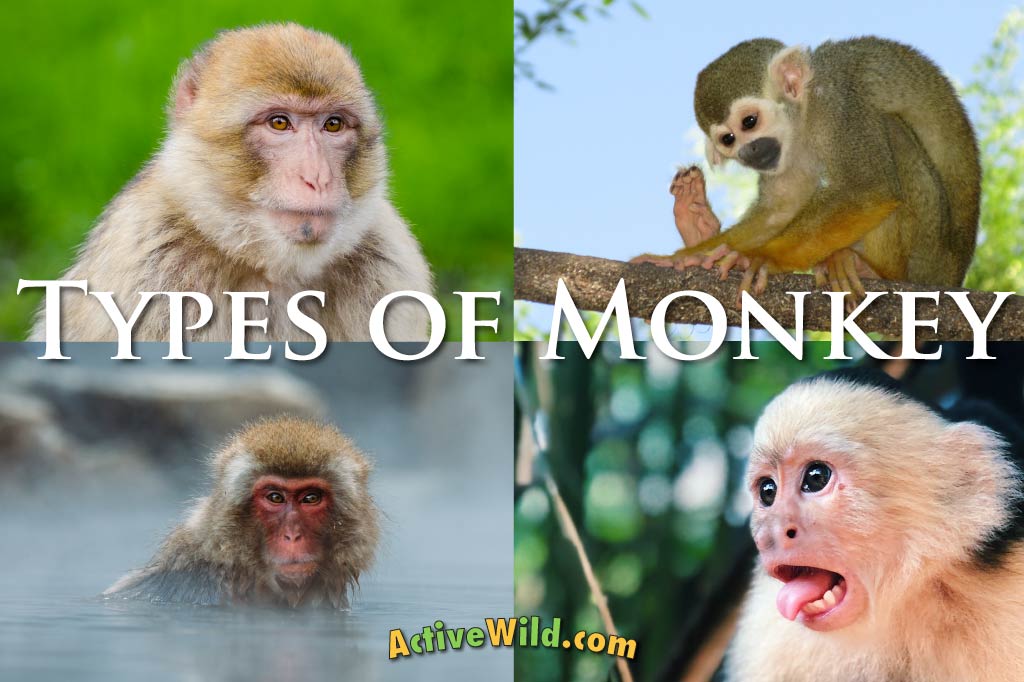

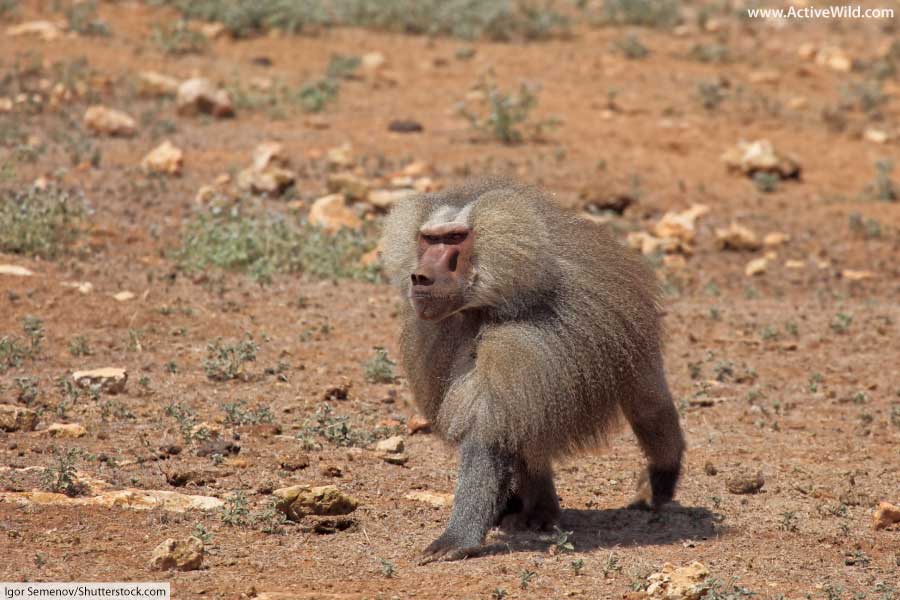

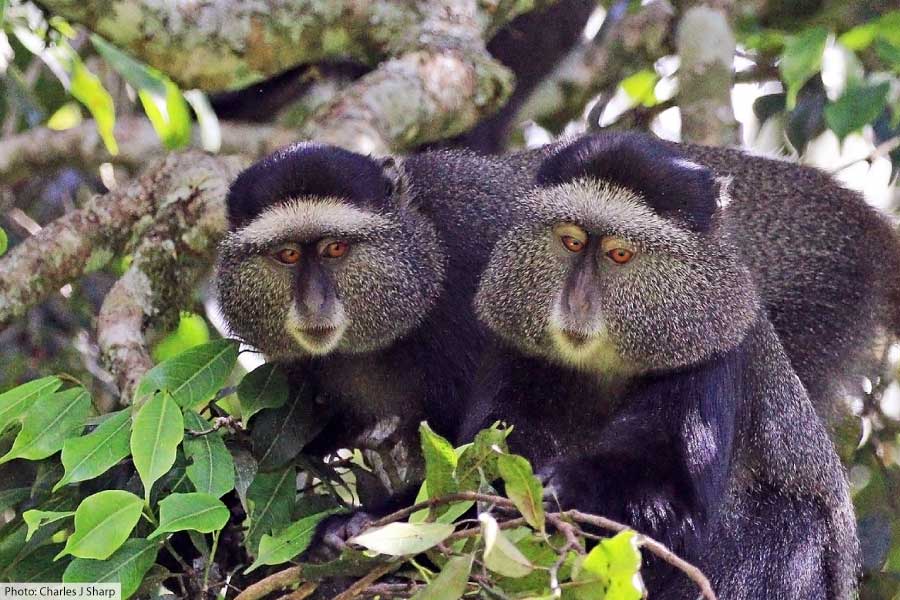






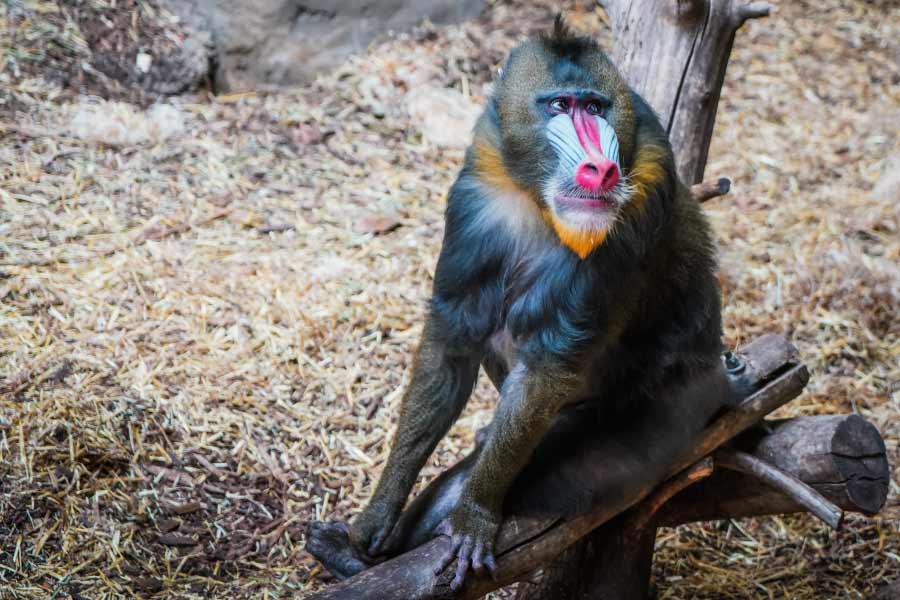

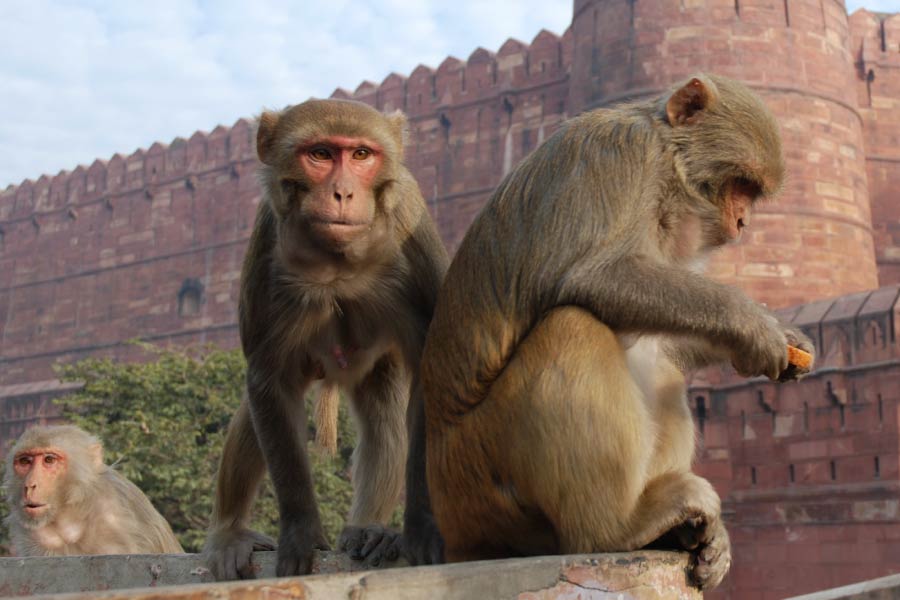
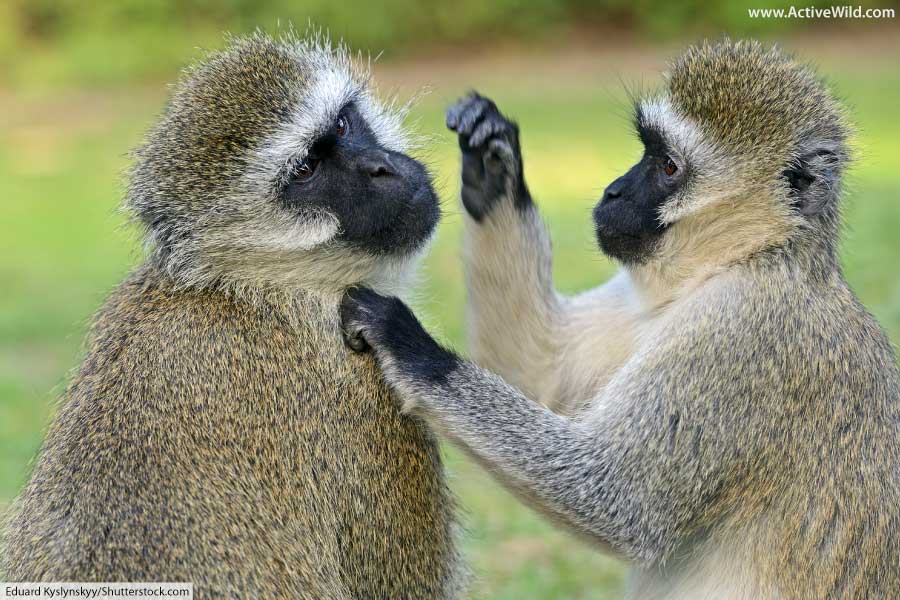
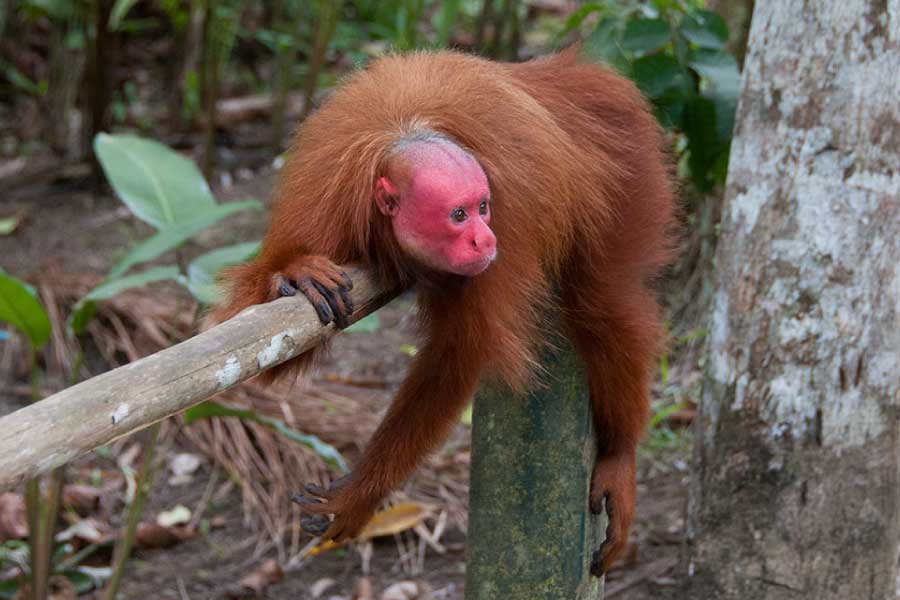
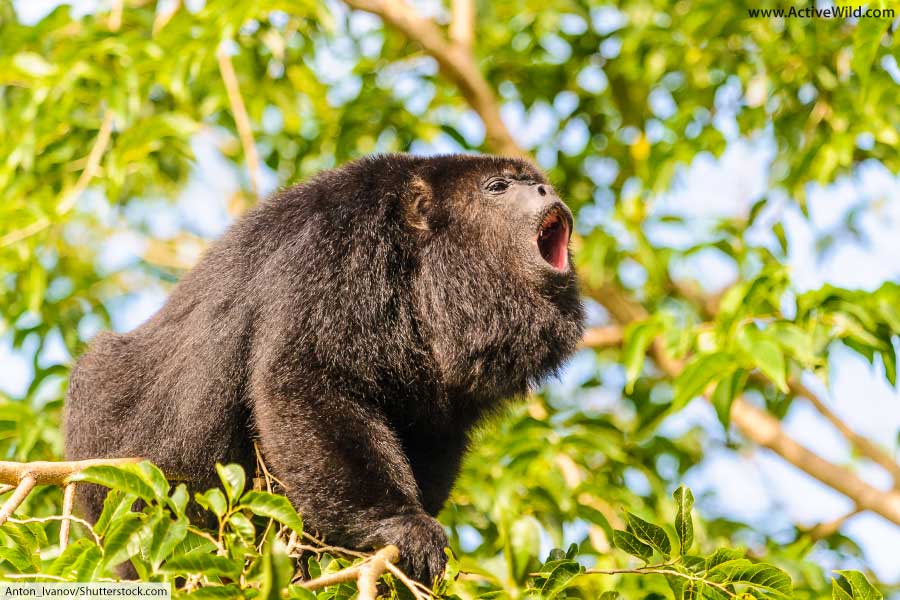


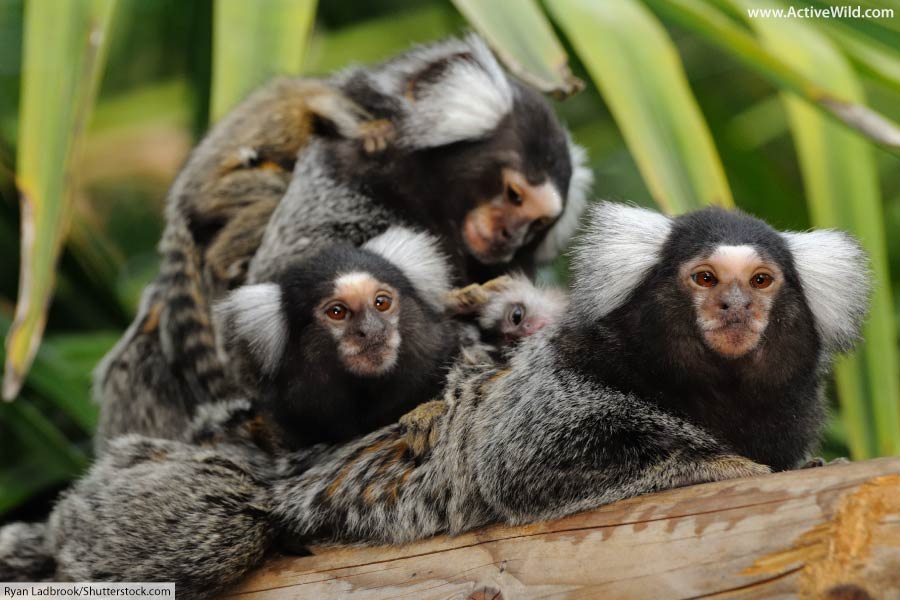
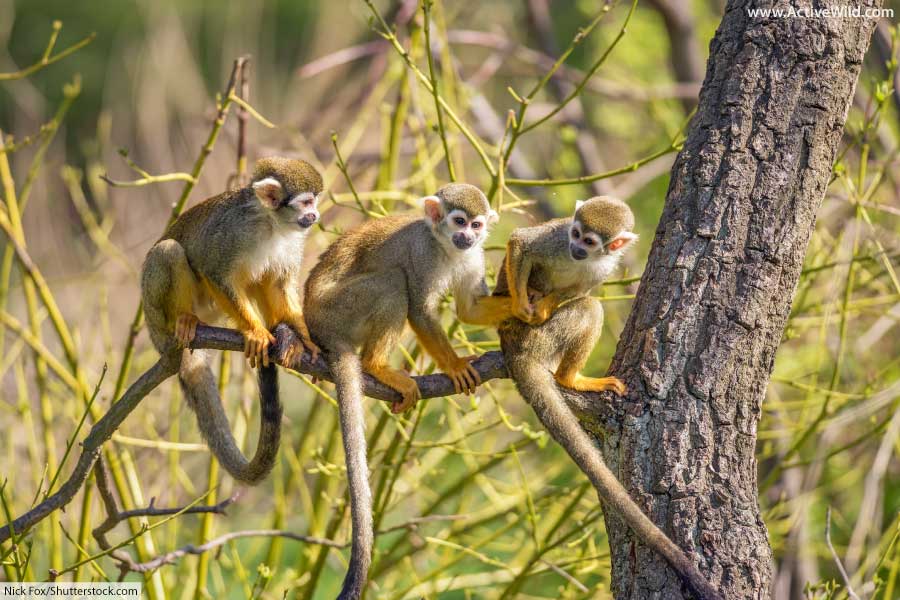
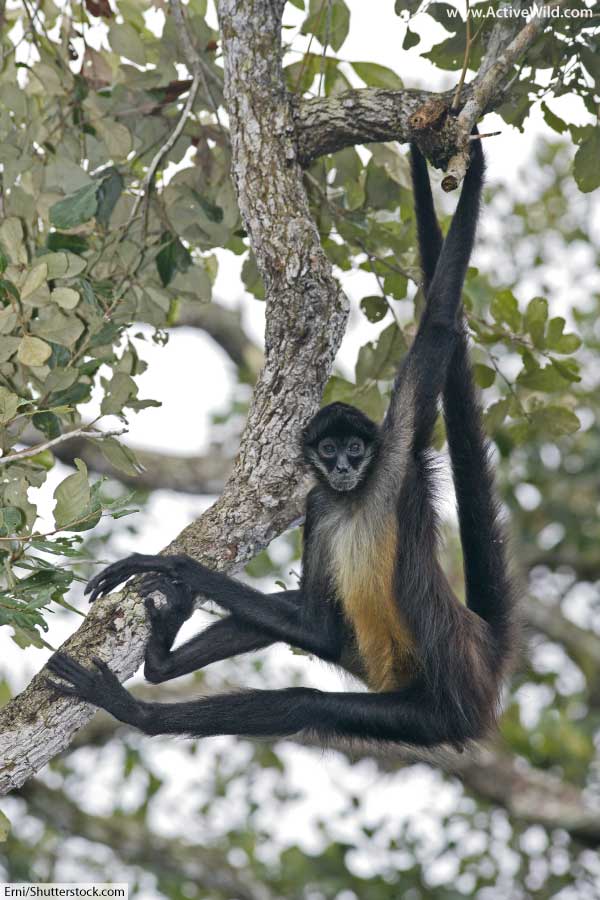
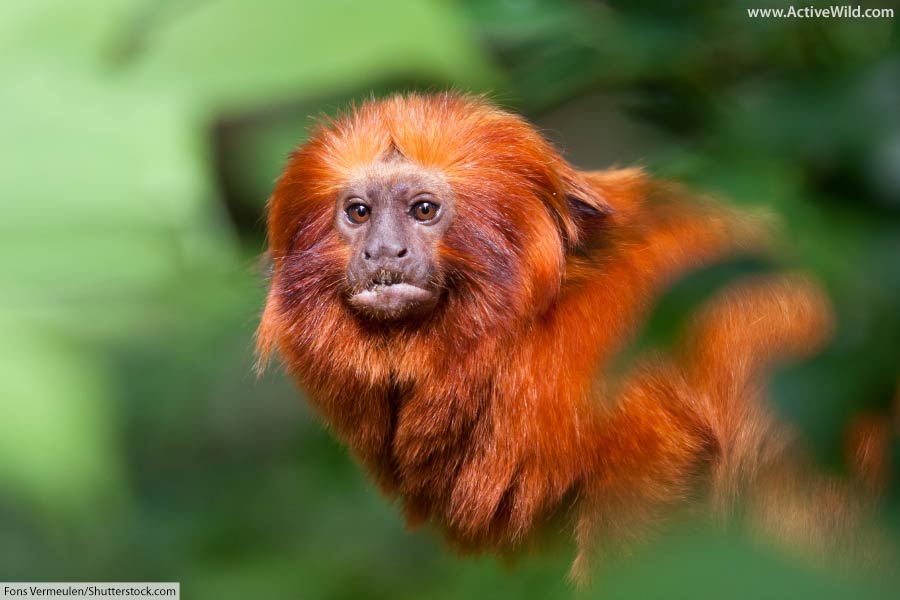

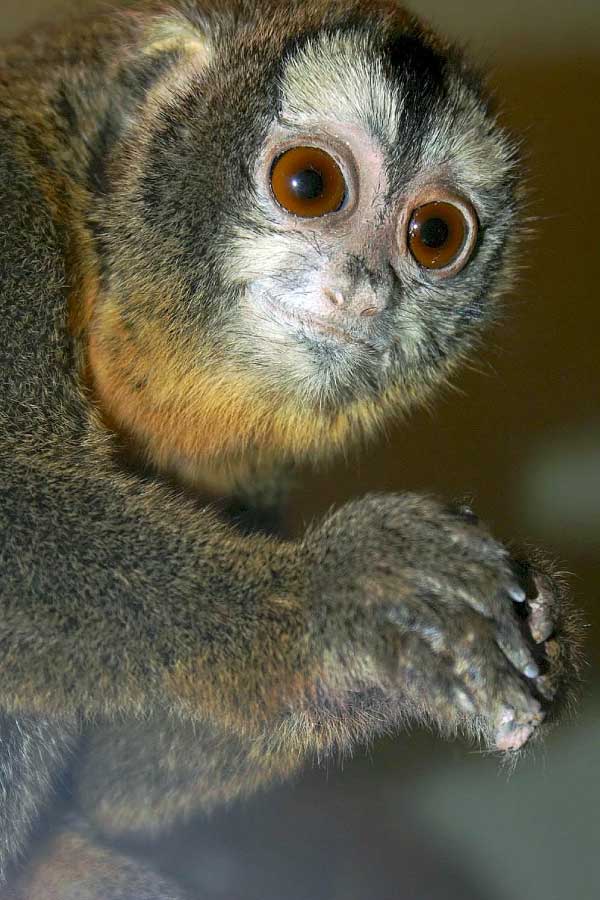

I read this with my son Eduardo (not born but he’s coming) he didn’t understand because he’s not born yet. I thought the crab eating maqaueuee was funny if you say the name out loud fast. Thanks for the monkeys
Eduardo Sr